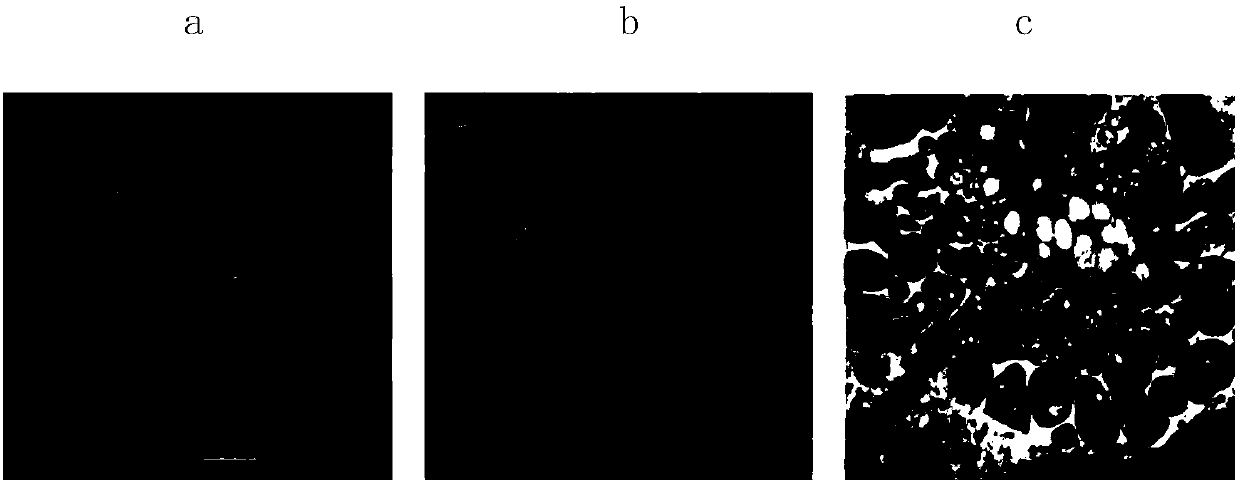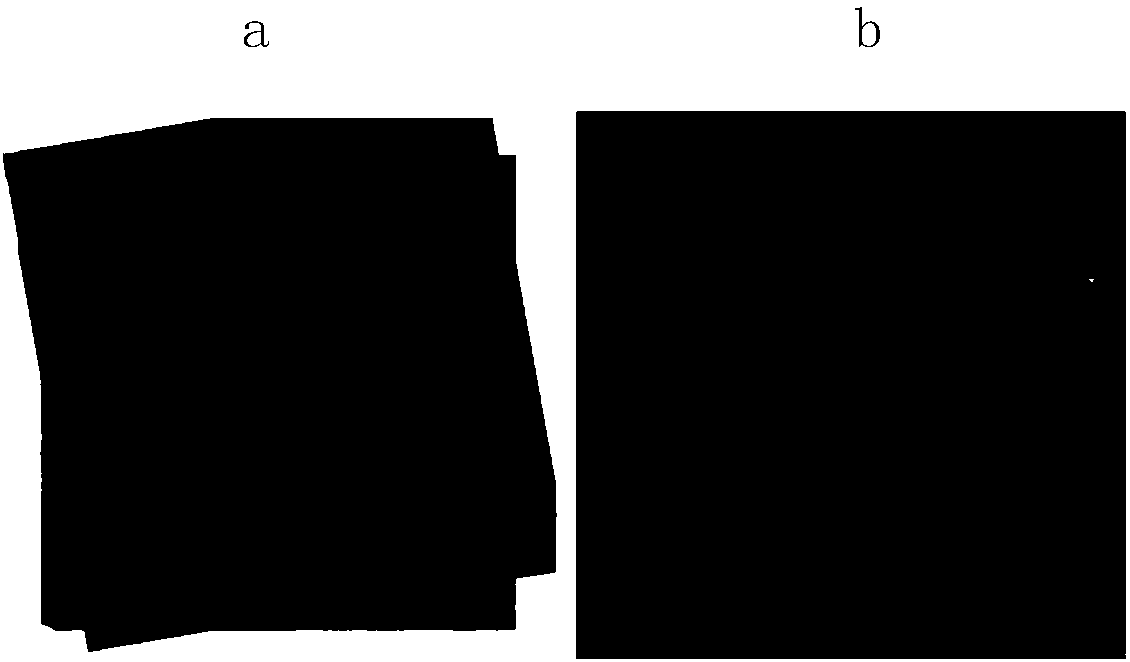Correlative light-and transmission electron microscopy sample treatment reagent and CLEM detection method
A transmission electron microscope and sample processing technology, applied in the detection field, can solve the problems of weak fluorescent signal in ultra-thin sheets, difficulty in compatibility with fluorescent signal and sample cell structure preservation, and unsatisfactory structural information, achieving high consistency and simple and effective method Effect
- Summary
- Abstract
- Description
- Claims
- Application Information
AI Technical Summary
Problems solved by technology
Method used
Image
Examples
Embodiment 1
[0061] Embodiment 1 A kind of light microscopy-transmission electron microscopy combined sample processing reagent
[0062] A light microscope-transmission electron microscope sample processing reagent, including fixative: 2.5% glutaraldehyde, embedding agent: hydrophilic basic resin GMA, 0.5% sodium borohydride, nuclear fluorescent dye DAPI, transmission electron microscope dye Uranyl acetate and lead citrate.
[0063] The fixing agent is 2.5% glutaraldehyde or a fixing agent mixed with 4% paraformaldehyde and 0.5% glutaraldehyde, wherein 2.5% glutaraldehyde is preferred. When 2.5% glutaraldehyde was used as a fixative, the effect of preserving the ultrastructure of the sample cells was the best.
[0064] The nuclear fluorescent dye is acridine orange (Acridine Orange, AO), ethidium bromide (Ethidium Bromide, EB), propidium iodide (Propidium Iodide, PI), Diaminophenylindole (DAPI), Hoechst dye, EthD III, 7- One of AAD or RedDot2.
[0065] The TEM dye is uranyl acetate or l...
Embodiment 2
[0066] Embodiment 2: the culture of the cell that has expressed EYFP-Mito molecule
[0067] (1) Plasmid construction of EYFP-Mito fusion gene:
[0068] Digest pAcGFP1-Mito with restriction endonuclease BamH I / Not I, and recover a 4.1kb fragment after electrophoresis; digest pEYFP-N1 with BamH I / Not I, electrophoresis, and recover a 0.7kb fragment with a DNA gel recovery kit PCR product, T4DNA ligase, ligated the recovered two fragments, transformed Escherichia coli DH5α, selected a single clone and amplified it in a small amount, and sequenced the obtained clone to confirm that the sequence was correct. Extract the plasmid and measure its concentration with an ultraviolet spectrophotometer;
[0069] (2) Cell culture and transfection:
[0070] 37 degrees Celsius CO 2 In a cell culture incubator, culture human cervical cancer Hela cells in RPMI 1640 medium containing 10% fetal bovine serum (FBS). When the cells grow to 70-80% density, mix serum-free RPMI1640 containing 12ug ...
Embodiment 3
[0071] Embodiment 3: the sample processing of the cell that has expressed EYFP-Mito molecule
[0072] (1) Sample processing:
[0073] After confirming the expression of EYFP-Mito protein, discard the supernatant of the culture medium, digest the cells with trypsin, and collect by centrifugation at 2000rpm after neutralizing the digestion solution in the culture medium, discard the supernatant, lightly wash the cells with PBS, and divide into 3 equal parts, After removing PBS, add 2.5% glutaraldehyde prepared in PBS, or 4% paraformaldehyde prepared in PBS, or a mixed fixative (4% paraformaldehyde+0.5% glutaraldehyde prepared in PBS), and fix at 4°C Overnight, samples were treated with 0.5% sodium borohydride in PBS for 5 min at 4°C, followed by dehydration infiltration.
[0074] The samples were dehydrated with 50%, 70%, and 95% ethanol at 4°C for 10 minutes, and then the samples were treated with 70%, 85%, and 100% GMA at -20°C for 10 minutes each; after replacing with new 10...
PUM
 Login to View More
Login to View More Abstract
Description
Claims
Application Information
 Login to View More
Login to View More - R&D
- Intellectual Property
- Life Sciences
- Materials
- Tech Scout
- Unparalleled Data Quality
- Higher Quality Content
- 60% Fewer Hallucinations
Browse by: Latest US Patents, China's latest patents, Technical Efficacy Thesaurus, Application Domain, Technology Topic, Popular Technical Reports.
© 2025 PatSnap. All rights reserved.Legal|Privacy policy|Modern Slavery Act Transparency Statement|Sitemap|About US| Contact US: help@patsnap.com



